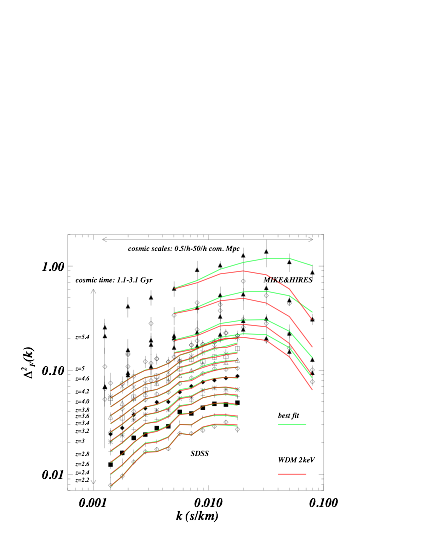
Reionization & the Evolving IGM
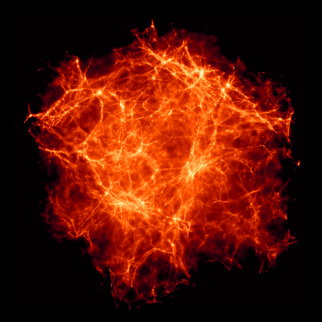

Reionization -- Following the hot Big Bang, the Universe expanded and cooled, allowing hydrogen atoms in the IGM to recombine and become neutral. We know that in less than one billion years, however, the hydrogen was once again ionized, most likely by ultraviolet photons from the first galaxies. These galaxies are largely too faint too observe directly; however, by studying the IGM to determine when and how this re-ionization event occurred we gain unique insight into when the first galaxies formed what many of their properties were. Reionization is ultimately a two-step process. Along with hydrogen reionization, I am also interested in the second phase, when quasars ionized helium in the IGM.
Below is a summary of some of my recent interests...


My research focuses on using quasar absorption lines to study the intergalactic medium (IGM) when the Universe was less than a few billion years old. I am particularly interested in determining when and how the IGM became re-ionized by the first galaxies and quasars.
The IGM contains most of the dark matter and baryons in the Universe, and provides the raw materials for galaxy formation. A key goal of my research is to use quasar absorption lines to measure the basic properties of the baryons, such as their temperature, chemical composition, and ionization state. These properties reflect the impact of galaxies and quasars on the IGM, and thus provide insight into the evolution of luminous objects from very early times up to the present day. I am also interested in using the IGM to determine the nature of dark matter.
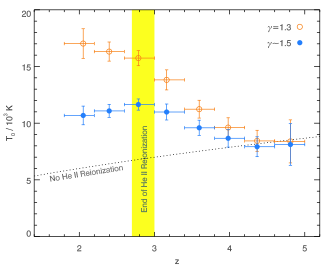
The Thermal History of the IGM
This project used the small-scale structure of the Lyman-alpha forest (the dense pattern of absorption lines in quasar spectra arising from neutral hydrogen in the IGM) to measure IGM temperatures over 2 < z < 5. We measured the “curvature” of the Lyman-alpha forest in a large sample of Keck/HIRES and Magellan/MIKE spectra. The results showed that the gas temperature gradually increases with decreasing redshift starting at z~4, consistent with photo-ionization heating during an extended He II reionization. A related project used a similar technique to measure temperatures in quasar near zones at z~6. We have also recently measured the full temperature-density relation at z=2.4 Becker, Bolton, Haehnelt, & Sargent 2011, MNRAS, 410, 1096; Bolton, Becker et al. 2012, MNRAS, 419, 2880; Bolton, Becker et al. 2013, MNRAS, submitted (astro-ph:1308.4411)
Metal Production During the First Gigayear
The abundances of elements such as carbon, oxygen, and iron in galaxies and in the IGM reflect the global history of star formation in the Universe as well as the extent to which galaxies have polluted their environments with chemically enriched outflows. My group used optical and near-infrared quasar spectra from Keck, Magellan, and the VLT to conduct a two-part search for these metals at z~5-6. We first found that highly-ionized metals, traced by C IV, are significantly less abundant than they are at z~2-4. Low-ionization metal absorbers traced by O I and C II, however, remain just as numerous, although they are somewhat weaker. These O I systems may arise from the low-mass galaxies believed to be responsible for hydrogen reionization. Becker, Rauch, & Sargent 2009, ApJ, 698, 1010; Becker, Sargent, Rauch, & Calverley 2011, ApJ, 735, 93
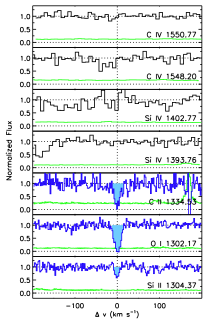
Iron and alpha-element production during the Reionization Epoch
Measuring metal abundances at z~5-6 provides a unique opportunity to study the yields of massive stars, since the Universe is only ~1 Gyr old and there has been little time for enrichment by delayed Type Ia supernovae. We found the relative abundances of carbon, oxygen, silicon, and iron in the O I systems described above to be generally consistent with those found in lower-redshift DLAs and present-day, metal-poor stars (non-carbon enhanced), with no evidence for significant enrichment from Pop III stars. Becker, Sargent, Rauch, & Carswell 2012, ApJ, 744, 91
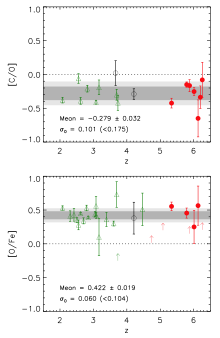
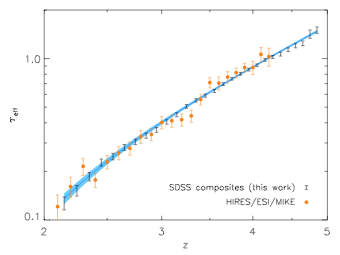
Evolution of the IGM Lyman-alpha Opacity
Using the IGM to probe galaxy formation and fundamental cosmology first requires establishing its basic physical parameters. One of these is the mean opacity to hydrogen Lyman-alpha photons, which is set by the density distribution, ionization rate, and temperature of the IGM. We used composite SDSS spectra to measure the Lyman-alpha opacity at high redshift with unprecedented precision, finding a smooth evolution over 2 < z < 5. The results should support a variety of investigations that use the Lyman-alpha forest to probe the high-redshift Universe. Becker, Hewett, Worseck, & Prochaska 2013, MNRAS, 430, 2067
The Evolution of the UV Background
The ionizing ultraviolet background (UVB) reflects the integrated output of ionizing photons from star-forming galaxies and active galactic nuclei. Its evolution with redshift depends not only on the production of these photons, but on their ability to travel through the IGM. My group has pursued a combination of projects to study the evolution of the UVB over 2 < z < 6. We used new measurements of the opacity of the Lyman-alpha forest and the temperature of the IGM (see below) to trace the UVB with high precision over 2 < z < 5. The results suggested (i) that the escape fraction of ionizing photons may increase by a factor of four from z~3 to 5, and (ii) that ionizing photons may be considerably more abundant near the end of reionization than previous studies had suggested. My PhD student, Alex Calverley, extended these measurements to z~6 using the quasar proximity effect (an enhancement in transmitted Lyman-alpha flux near the quasar redshift due to ionizing radiation from the quasar itself). Alex developed new techniques to measure the proximity effect out to z~6. The results showed a rapid decline in the hydrogen ionization rate from z~5 to 6, suggesting that the mean free path for ionizing photons may be evolving rapidly over this interval. Such evolution may be expected in the period immediately following reionization. Becker & Bolton 2013, MNRAS, 436, 1023; Calverley, Becker, Haehnelt, & Bolton 2011, MNRAS, 412, 2543
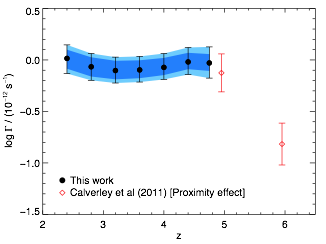

The hydrogen ionization rate over 2 < z < 6
The ionizing efficiency of star-forming galaxies, as measured by the ratio of their ionizing to non-ionizing UV emissivity. (Figures from Becker & Bolton 2013)
The temperature of the IGM over 2 < z < 5.
An “O I” system at z=6
Abundance ratios in QSO absorbers over 2 < z < 6
The mean Ly-alpha opacity of the IGM over 2 < z < 5
Testing the Nature of Dark Matter
Current cosmological models generally assume that dark matter consists of kinematically “cold” particles. Recently, however, there has been renewed interest in warm dark matter (WDM) as possible means to explain the apparent dearth of satellite galaxies around the Milky Way. The free-streaming of such particles would suppress structure formation on small scales, impacting not only low-mass galaxies but also the small-scale properties of the IGM. We therefore used observations of the high-redshift Lyman-alpha forest to set the tightest current limits on WDM. The small-scale structure in the forest requires that dark matter particles be more massive than 3.3 keV for thermal relics (2-sigma), strongly disfavoring WDM as a solution to the so-called small-scale crisis. Viel, Becker, Bolton, & Haehnelt 2013, PhysRevD, 88, 3502
The Lyman-alpha forest flux power spectrum, compared to predictions for CDM (green) and WDM (red)
